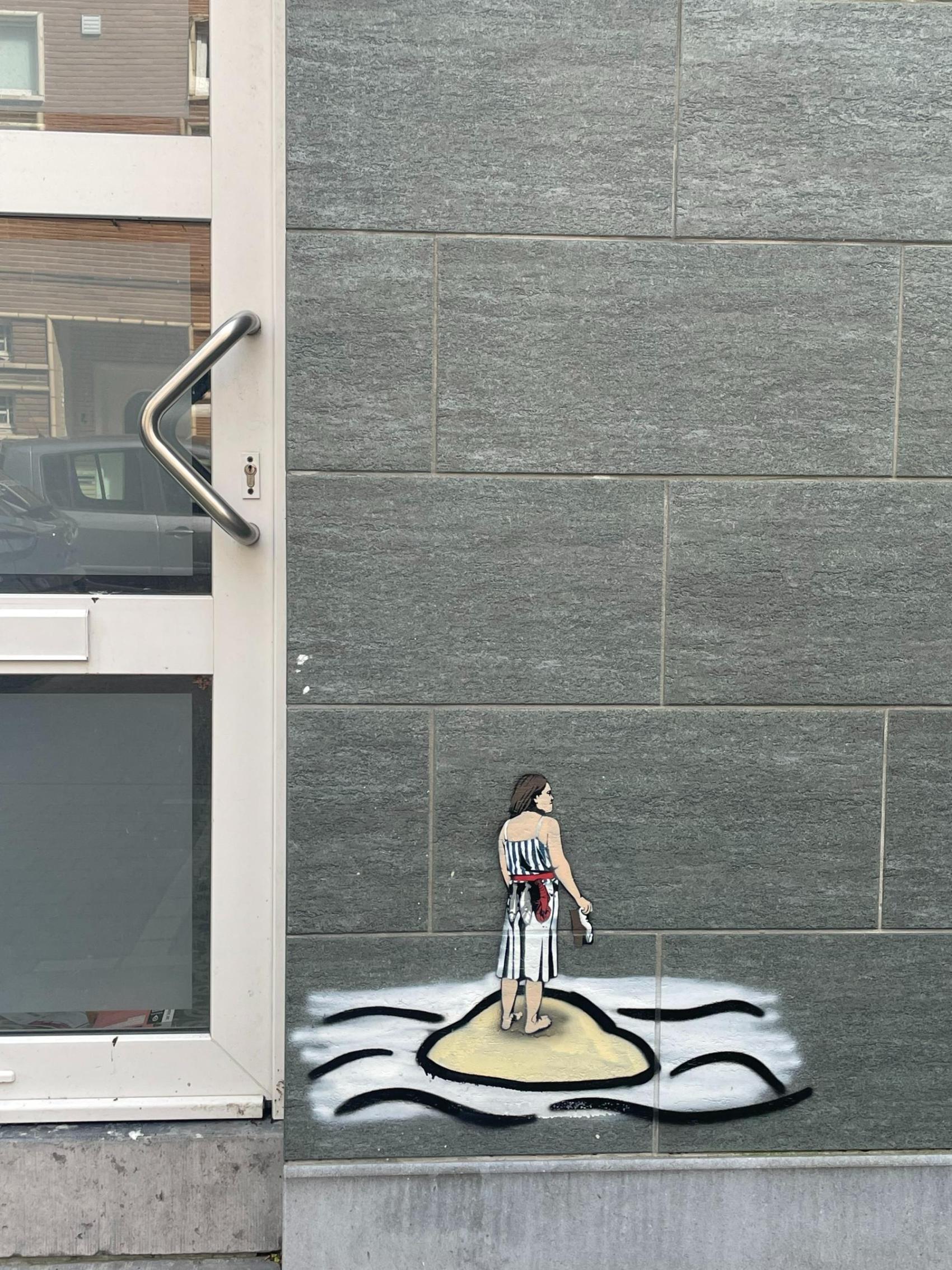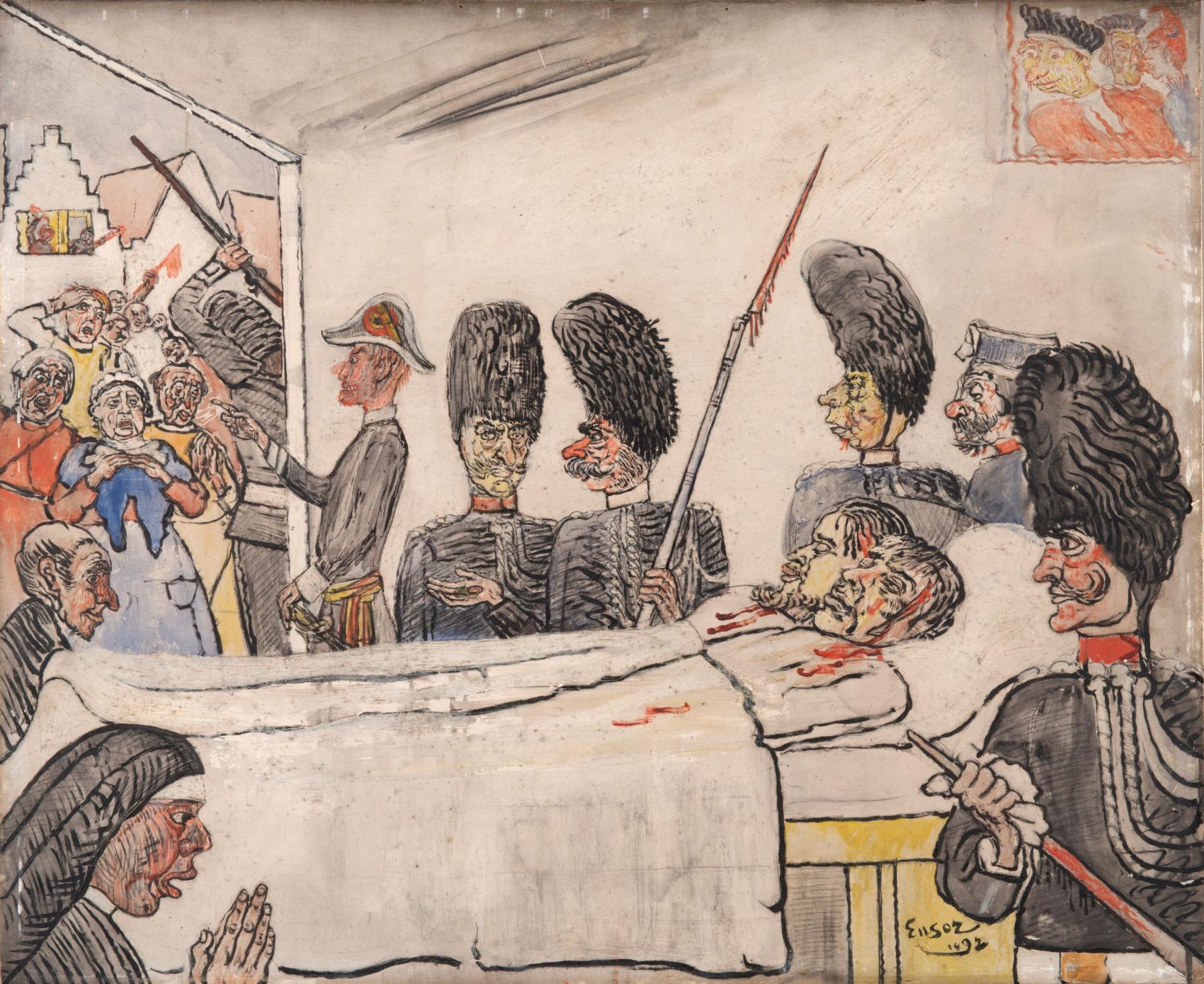Sanne, resident:
No, even in 1890 it was not the custom to hang fish on your belt. Nor is this a fisherwoman, she is dressed too smartly for that. But Ensor’s little fantasy is less innocent than it seems. He knew very well that the sea did not solely exist for the pleasure of the bourgeoisie. It was also the source of life for the fishermen of Ostend.
And they were giving up. They lived in abject poverty in working-class neighbourhoods, a few hundred metres behind the fancy facades of the dyke. It got worse and worse due to competition with the British. The English had more modern ships, and they caught a lot more fish. They came here to sell their overflowing baskets in the fish market, at dumping prices that the Ostend fishermen could not compete with. Poverty became unbearable and on 22 August 1887, it all came to a head. The fishermen rebelled.
But it was the middle of summer! Ostend was full of wealthy tourists. So the rebellion had to be nipped in the bud without delay. The gendarmerie opened fire on the crowd; three were killed and seven injured. Thankfully, the people enjoying the beach were totally oblivious to the incident. To them, the shots must have sounded like champagne corks popping. Afterwards, newspapers reported with satisfaction that the children could continue building their sandcastles without a care in the world... Ensor was appalled. He sided with the fishermen and produced razor-sharp works on the issue for years to come, such as The Gendarmes from 1892.











